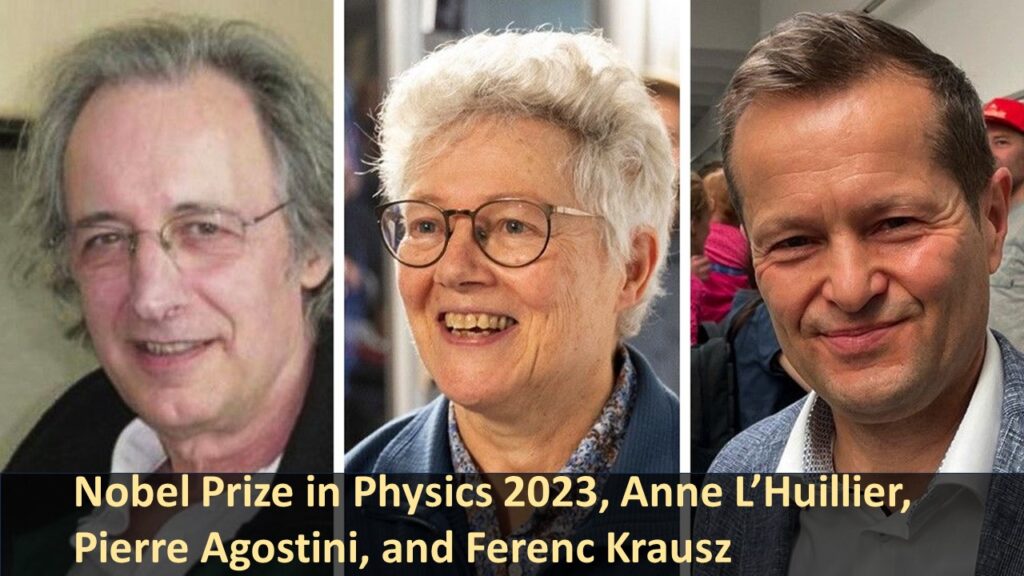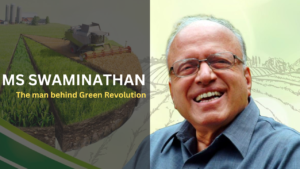Nobel Prize in Physics for 2023 has been awarded to three scientists whose contributions have facilitated the observation of electrons, holding promise for advancements in disease diagnosis and electronic gadgetry. Anne L’Huillier, Pierre Agostini, and Ferenc Krausz were recognized for their groundbreaking experiments, described as “bestowing upon humanity novel instruments for delving into the realm of electrons within atoms and molecules.
They have demonstrated a method to generate incredibly brief bursts of light capable of measuring the swift processes in which electrons traverse or alter their energy states,” as stated by the Nobel Prizes website.
Nobel Prize in Physics 2023
Ferenc Krausz, who serves as the Director at the Max Planck Institute of Quantum Optics and is a Professor at the Ludwig Maximilian University of Munich, joins Pierre Agostini and Anne L’Huillier in receiving the 2023 Nobel Prize in Physics. The Nobel Committee commends these researchers for their pioneering work in establishing the field of attosecond physics.

Following the Nobel Prize in Medicine, which was awarded earlier this week to Hungarian scientist Katalin Kariko and her U.S. colleague Drew Weissman for their groundbreaking discoveries concerning mRNA molecules that laid the foundation for COVID-19 vaccines, the second Nobel Prize of the week has been granted in the field of Physics.
Experiments involving light capture
The Royal Swedish Academy of Sciences stated in its press release that the three Nobel Laureates in Physics for 2023 are being honored for their experiments, which have provided humanity with innovative tools for delving into the world of electrons within atoms and molecules.
Pierre Agostini, a Professor at The Ohio State University in Columbus, USA, along with Ferenc Krausz, who serves as the Director at the Max Planck Institute of Quantum Optics in Garching and is a Professor at Ludwig-Maximilians-Universität München in Germany, and Anne L’Huillier, a Professor at Lund University in Sweden, have successfully showcased a method to generate exceedingly brief pulses of light. These pulses can be harnessed to gauge the swift processes through which electrons either move or alter their energy states.
The experiments have yielded light pulses of such extreme brevity that they are measured in attoseconds, affirming that these pulses can be utilized to capture images of processes occurring within atoms and molecules. The contributions have made it possible to study processes so swift that they were previously beyond our ability to track.
Due to this experiment we are now able to unlock the realm of electrons. Attosecond physics provides us with the chance to comprehend mechanisms controlled by electrons.
Background of Nobel Prize in Physics
The Nobel Prize in Physics is conferred upon individuals who have made outstanding contributions to humanity in the realm of physics. Its inception dates back to 1895 when Alfred Nobel articulated his final wishes. On November 27, 1895, Nobel bequeathed the major portion of his wealth to establish a set of prestigious awards known as the Nobel Prizes.
In accordance with Nobel’s will, a specific segment was allocated for “the person who shall have made the most significant discovery or invention within the field of physics.
Key Information on Nobel Prize in Physics
Since 1901, a total of 117 Nobel Prizes in Physics have been granted to 225 distinguished laureates. Considering that John Bardeen was a two-time recipient, this brings the count of individuals honored with the Nobel Prize in Physics to 224. There were six instances in which the prize was not awarded: in the years 1916, 1931, 1934, 1940, 1941, and 1942.
Among these awards, 47 were bestowed upon a single laureate, 32 were shared by two recipients, and 38 were divided among three. Lawrence Bragg remains the youngest laureate in the history of the Nobel Prize in Physics, receiving the honor alongside his father in 1915 at the age of 25. Arthur Ashkin, awarded the Nobel Prize in 2018 at the age of 96, holds the distinction of being the oldest laureate in the field. Among the 224 recipients of the Nobel Prize in Physics, five are women.
Nobel Prize 2022 in Physics
The Nobel Prize in Physics for the year 2022 was collectively bestowed upon Alain Aspect, John F. Clauser, and Anton Zeilinger. Their commendable work in conducting experiments with entangled photons, which demonstrated the violation of Bell inequalities and paved the way for the development of quantum information science, earned them this prestigious recognition.
Alfred Nobel’s will outlined the Nobel Prize categories, which encompass physics, chemistry, physiology or medicine, literature, and peace.
Nobel Prize 2023 in Medicine
The 2023 Nobel Prize season has been announced on October 2 with the revelation of the Nobel Prize in Medicine. On October 2, the Nobel Prize in Physiology or Medicine for 2023 was conferred upon Katalin Karikó and Drew Weissman. They were honored for their breakthroughs related to nucleoside base modifications, which facilitated the creation of highly efficient mRNA vaccines against COVID-19.
History of Nobel Prize
In the 19th century, Alfred Nobel, a distinguished Swedish scientist and entrepreneur, established the renowned Nobel Prizes. Before gaining recognition through these awards, Nobel was acclaimed for inventing dynamite, achieved by blending nitroglycerine with a stabilizing substance to enhance its explosive properties. He held an impressive portfolio of over 300 patents.
FAQs
Who got the Nobel prize in Physics in 2023?
Pierre Agostini, Ferenc Krausz and Anne L’Huillier received the Nobel Prize in Physics in 2023
Who got the Nobel prize in Medicine in 2023?
Katalin Karikó and Drew Weissman received the Nobel Prize in Medicine in 2023.
How many Nobel Prize winners in Medicine?
Fewer than 1,000 people have received a Nobel Prize, and only 225 people have previously been awarded one in Physiology or Medicine.
Who is the youngest Nobel Prize winners in Physics?
In 1915, aged 25, he was the youngest ever winner of the Nobel Prize in Physics – jointly with his father, William Henry Bragg, then professor at Leeds. Educated in Adelaide and Cambridge, Bragg served in World War I.
Which Indian Nobel Prize in Physics?
Sir Chandrasekhara Venkata Raman, often known as CV Raman, was awarded the Nobel Prize in Physics in 1930 for his contributions to the understanding of the scattering of light and for the discovery of the phenomenon that bears his name.
Who got Nobel Prize in Physics twice?
John Bardeen is the only laureate who has been awarded the Nobel Prize in Physics twice, in 1956 and 1972.







